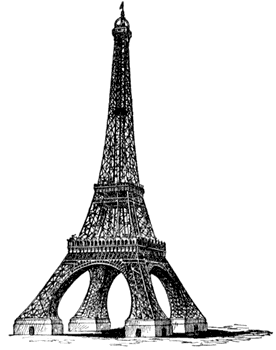The Maison Victor Hugo is in the Place des Vosges, the pretty square that was built under King Henri IV. Victor Hugo lived here from 1832-1848.
 |
| Kate and Carter Place des Vosges |
 |
| Brickwork at Place des Vosges |
 |
| Victor Hugo's Apartment |
 |
| Bust of Victor Hugo |
Hugo's father was a a high ranking officer in Napoleon's army. His mother was a Catholic and royalist. When he was young, he traveled with his father's appointments to Naples, Rome and Spain. When his mother was tired of all the moving around, she took the children to Paris to live.
 |
| Entrance to Victor Hugo's Apartment |
Hugo fell in love with his childhood friend Adèle Foucher. His mother was against the marriage so they became secretly engaged and married in 1822 after his mother died.
 |
| Adèle Hugo |
 |
| Portraits of Léopoldine at age 4 and age 19 |
His oldest daughter, Léopoldine, was his favorite. She died tragically soon after her marriage at 19. She was boating on the Seine with her husband and the boat overturned. She was pulled down by her heavy skirts and she drowned. Her husband drowned trying to save her. Hugo kept the portrait of her that was painted when she was 19 with him always, even in exile. He never got over her death.
The apartment looked out on the square that was called at that time Place Royal.
 |
Reception Room with Corner Window
Looking over Place des Vosges |
 |
| View of the Square |
Hugo was initially a royalist, like his mother, but became a republican and was elected to the National Assembly of the Second Republic in 1848. After the coup d'etat of Napoleon's nephew, Napoleon III, in 1851, Hugo openly declared him a traitor to France and Hugo had to quickly leave the country and go into exile. He went to Brussels and then the Island of Jersey in the English Channel. He was kicked out of Jersey for supporting a Jersey newspaper that had criticized Queen Victoria and he settled on the nearby Island of Guernsey with his family from 1855 to 1870. This is when he published Les Misérables.
Rooms from his home in Guernsey were reassembled in the museum in Paris. He directed the decoration of these rooms.
 |
| Chinese Living Room |
 |
| Living Room Detail |
 |
| Living Room Detail |
 |
| Fireplace in Chinese Living Room |
Hugo traveled around Guernsey looking for old rustic chests and sent his sons in France in search of Gothic and Renaissance furniture. He then had them dismantled and reassembled by his carpenters, according to the designs he imagined. He was very creative.
 |
| Hugo Designed Chest |
 |
| Another Interesting Piece of Furniture |
 |
| Chest with Hugo Family Coat of Arms |
 |
| Hugo's Standing Writing Desk |
Hugo returned to Paris in 1870 just in time for the siege of Paris by the Prussian Army. Food became scarce and he ate animals given to him by the Paris Zoo. As the siege continued, he wrote in his diary that he was reduced to "eating the unknown." After his two sons died in 1871 and 1873, he focused his attention on his grandchildren, Georges and Jeanne, and published
The Art of Being a Grandfather in 1877. He suffered a mild stroke 1878.
 |
| Victor Hugo |
 |
| Georges and Jeanne |
Victor Hugo died in his bed from pneumonia in 1885 at the age of 83. At the inauguration of the museum, his grandchildren offered the furniture from his bedroom, which has been faithfully recreated in the apartment.
 |
| Victor Hugo's Bedroom |
Although he requested a pauper's funeral, he was awarded a state funeral by Presidential decree. More than two million people joined in his funeral procession from the Arc de Triomphe to the Panthéon where he was buried. He shares a crypt with the French novelists Alexandre Dumas, who wrote
The Three Musketeers, and Émile Zola.
Victor Hugo left five sentences as his last will, to be officially published:
I leave 50,000 francs to the poor.
I want to be buried in their hearse.
I refuse funeral orations of all churches.
I beg a prayer to all souls.
I believe in God.



















































